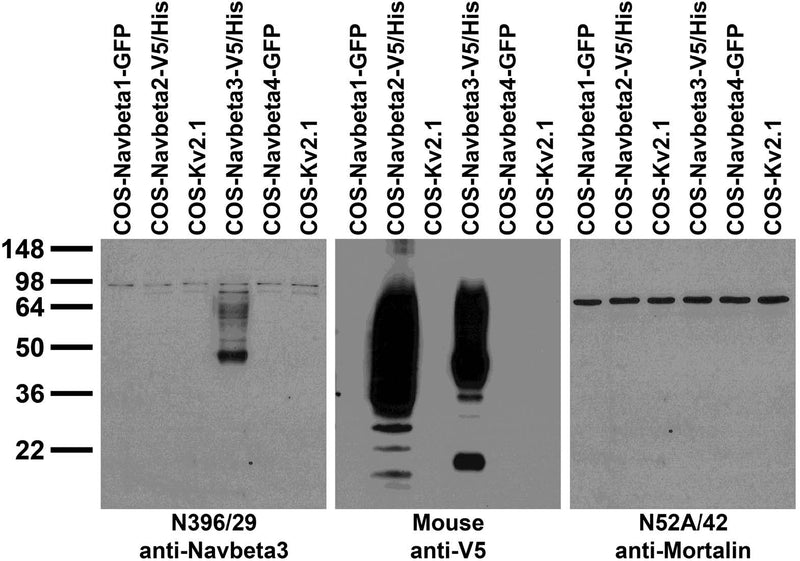Anti-Navbeta3 Na+ Channel Antibody (N396/29)
Our Anti-Navbeta3 Na+ channel mouse monoclonal primary antibody from NeuroMab is produced in-house from hybridoma clone N396/29. It detects mouse and rat Navbeta3 Na+ channel, and is purified by Protein A chromatography. It is great for use in ICC, WB.
SKU: 75-391
Ships: 1-2 business days
Product Details
Navbeta3 Na+ channel
Sodium channel subunit beta-3 or Navbeta3 Na+ channel is encoded by SCN3B. Voltage gated sodium channels are made up of an alpha (pore forming) subunit and 1 or 2 beta subunits. Navß3 is a transmembrane protein and acts as a regulatory subunit in excitable membranes and modulates the kinetics of channel. Nabß3 is expressed in many tissues, including the central and peripheral nervous system, heart and pancreatic endocrine cells. Diseases associated with SCN3A include forms of Epilepsy and Encephalopathy.
Purified by Protein A chromatography
1 mg/mL
Monoclonal
N396/29
IgG2b
ELISA, ICC, WB
Mouse
Scn3b
40 kDa
Fusion protein amino acids 1-215 (full-length) of rat Navbeta3 (accession number Q9JK00) produced recombinantly in E. Coli
Rat
Mouse, Rat
AB_2491090
Aliquot and store at ≤ -20°C for long term storage. For short term storage, store at 2-8°C. For maximum recovery of product, centrifuge the vial prior to removing the cap.
Liquid
Produced by in vitro bioreactor culture of hybridoma line followed by Protein A affinity chromatography. Purified mAbs are >90% specific antibody.
10 mM Tris, 50 mM Sodium Chloride, 0.065% Sodium Azide pH 7.125
Unconjugated
Does not cross-react with Navbeta1, Navbeta2 or Navbeta4
Each new lot of antibody is quality control tested by western blot on rat whole brain lysate and confirmed to stain the expected molecular weight band.
These antibodies are to be used as research laboratory reagents and are not for use as diagnostic or therapeutic reagents in humans.
United States
24 months from date of receipt
Sodium channel subunit beta-3
Shipped on ice packs




